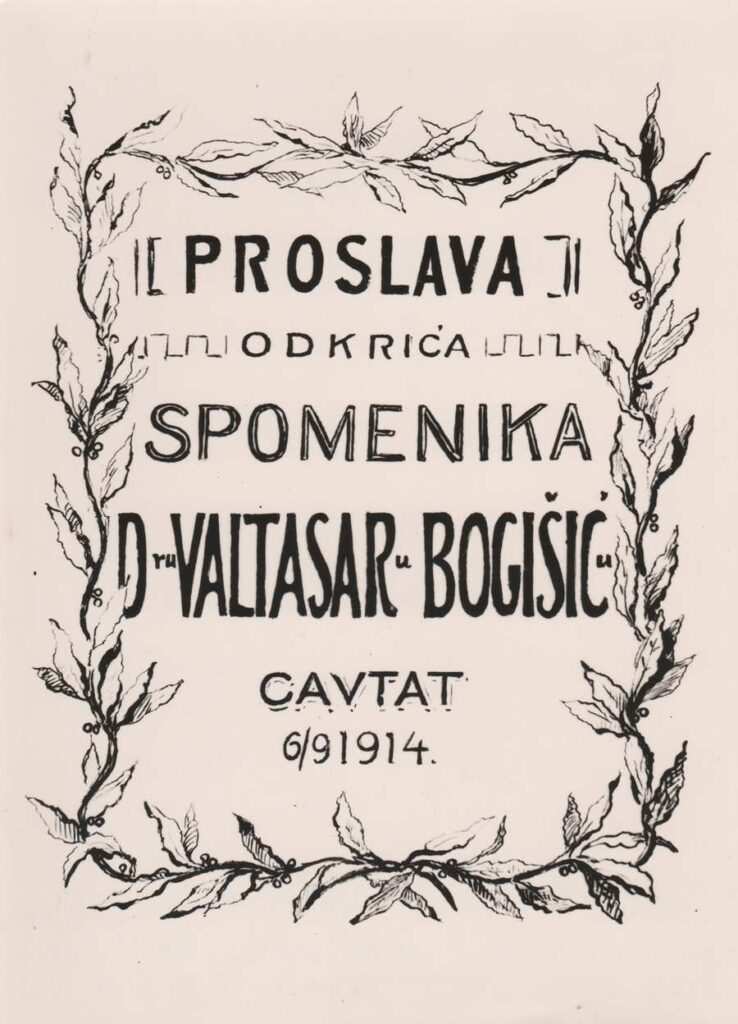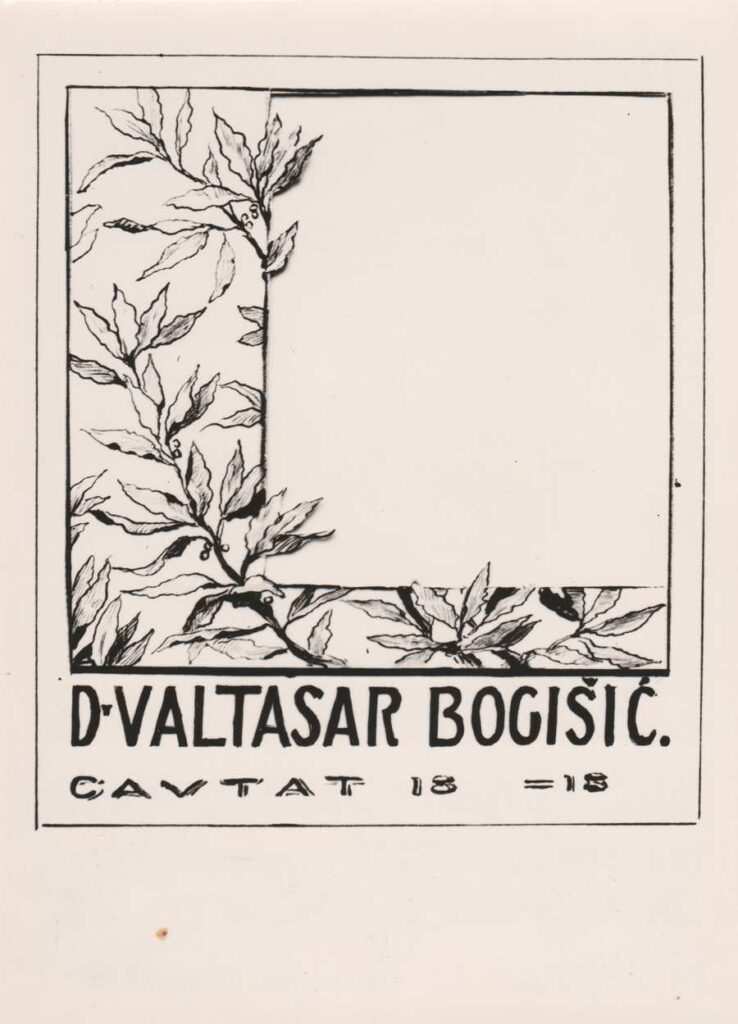Following Baltazar Bogišić’s unexpected passing in Rijeka on 24th April 1908, his sister, Marija Bogišić Pohl, took care not only of his burial, but also of preserving the memory of his immense achievements in his native Cavtat. After Bogišić’s remains arrived by boat from Rijeka to Gruž, they left the Old Town port, followed by two other steamships, Cavtat and Venćeslav, which were packed with the municipality representatives, the municipal marching band and the general populace. The three boats were headed to Cavtat, where they arrived around 11 a.m., with the funeral taking place immediately afterwards.
An article in the Dubrovnik periodical noted that almost `all local societies and companies were represented‘: `Both the local municipality and the Serbian Party sent their own marching bands to the funeral service, while approximately 25 wreaths were brought. The whole of Cavtat attended the funeral, from small male and female school children to representatives of all corporations and societies. At 11 o’clock., a large procession began moving towards the church, where the funeral service was held. After the service, the procession headed to the cemetery, where five touching eulogies were given. All the people of Cavtat were in mourning. The shops were closed, the lanterns covered in black, black carpets covered the windows and the flags on the boats fluttered at half-mast as a sign of mourning. Everything reflected sadness and mourning for the great deceased. Dubrovnik and Cavtat did their best to show their respects, because the deceased deserved a proper send-off. ‘

Since Bogišić did not leave a final will, his sister Marija inherited the considerable inheritance as the sole heir. She was also responsible for preserving the memory of Bogišić in Cavtat; the results of her efforts have been maintained to this day. By founding Bogišić’s library and museum and by investing considerable resources in improving the town and the quality of life, she indelibly imprinted the Bogišić family name in the fabric of the city.
At last, as a `visible, permanent and eternal sign of recognition and respect‘, the people of Cavtat wished to honour their famous fellow resident and founded a committee to collect `donations for the erection of a monument to our famous scholar, Dr Valtazar Bogišić‘.
Having consulted Vlaho Bukovac, Marija Bogišić Pohl did not accept the advice of Bogišić’s friend, the diplomat Ivan Pavlović, that the monument should be built by Ivan Meštrović. Namely, Bukovac proposed that the monument should be crafted by Petar Pallavicini, a recently graduated student from Prague and a Korčula native. After the funds were collected and Marija Bogišić Pohl gave permission for the demolition of the family house, which blocked the view of the sea, in order to create a wide public space, preparations for the erection and ceremonial unveiling of the monument began around 1913.
Marija and her personal adviser Đorđi Bijelić were in frequent correspondence with Bukovac, who acted as chairman of the Committee for the Unveiling of the Monument. Pallavicini was in Cavtat at the beginning of 1914 and finished the monument in July of the same year. The ceremonial unveiling of the monument was planned for September; the main speaker at the unveiling was to be Lujo Vojnović, Antun Vučetić was supposed to compile a memorial book for the occasion, while Bukovac was supposed to take care of the decoration.

However, as Bukovac wrote to his friend Marko Car, due to the events of the war, the ceremony had been postponed until April next year, after Easter, stating that he would prepare all the necessary material in advance. The monument was sealed with wooden planks and its unveiling was left for better times.
The way in which Bukovac imagined the postoponed event was published in the Narod newspaper: `Besides a tribute to Bogišić, the event was intended to be a magnificent celebration of the local culture. Representatives of all our cultural societies, both in the then Austro-Hungarian Monarchy and in the free kingdoms of Serbia and Montenegro, were to be invited, solemnly welcomed and hospitably received, along with the representatives of foreign nations and certain societies, of which Bogišić was either a regular or an honorary member, especially those of Russia and France, where Bogišić enjoyed the reputation of a great scholar and was showered with the greatest honours and distinctions during his lifetime.‘ However, the scourge of war ultimately lasted for four years and further delayed the event.
Difficult economic conditions and the resulting lack of funds for the unveiling ceremony kept the monument away from the public eye for a few more years. Unfortunately, Đorđi Bijelić passed away in 1919, while Marija Bogišić Pohl passed away in 1920. These two events most likely served as impetus for Bukovac to propose to the Cavtat Youth Club to use the local feast of Our Lady of Snow as an occasion for unveiling the monument on their own initiative.
As the Narod newspaper writes, the event finally took place in 1921: `It was last year, during his stay in his hometown, that Mr Vlaho Bukovac, the Chairman of the former Committee for the Unveiling and the one tasked with the artistic aspect of the event and having already prepared many decorations for the event in the pre-war period, was the first to come up with the idea for the Bogišić monument to be unveiled in this way. He expressed this idea on several occasions in conversation, lamenting the impossibility of celebrating and unveiling the monument in a deliberate manner in today’s times while loathing the thought of the monument remaining a tasteless pyramid of blackened wood on the beautiful coast of Cavtat as a symbol reproach to the people of Cavtat for not honouring Bogišić. The act of unveiling the monument by the Cavtat Youth Club was met with general approval by their fellow residents and one could see the delight on everyone’s face when on Sunday, on the feast day of Our Lady of Cavtat, they saw the Bogišić monument unveiled, decorated with a laurel wreath and tricolour flags and showered with flowers.‘


